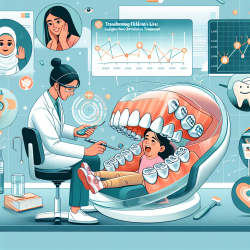Hypernasality occurs when there is an abnormal resonance in the nasal cavity during speech, often due to velopharyngeal insufficiency. This study describes two distinct cases where different prosthodontic approaches were used to manage hypernasality, illustrating the potential and limitations of these interventions.
Case Insights and Practical Applications
Case 1: Combining Prosthodontic and Biofeedback Techniques
The first case involved a young woman with hypernasality of unknown etiology. She was treated with a combined palatal lift and speech bulb prosthesis, which aimed to improve velopharyngeal closure. Despite initial improvements, it was the integration of online nasalance and pitch biofeedback that significantly enhanced her outcomes.
Takeaway for Practitioners:
- Use biofeedback tools like nasometers to provide real-time visual feedback on nasal resonance. This can help patients understand and adjust their speech patterns more effectively.
- Encourage vocal play to explore different voice qualities. In this case, the patient's "baby voice" helped her achieve better velopharyngeal closure.
Case 2: Customizing Prosthesis Design
The second case involved a patient with velar paralysis due to radiation therapy for a brain stem tumor. Initially treated with a standard acrylic speech bulb prosthesis, she experienced only moderate improvement. A redesigned prosthesis with a flexible silicone end piece provided a better occlusion of the velopharyngeal opening, leading to greater improvement.
Takeaway for Practitioners:
- Consider customizing prosthesis designs to better suit individual patient needs. The flexible silicone end piece used in this case provided a more effective solution than the standard acrylic prosthesis.
- Regularly evaluate and adjust the prosthesis based on patient feedback and clinical observations to ensure optimal performance.
Encouraging Further Research
These cases underscore the need for continued research and innovation in both prosthesis design and behavioral interventions. While prosthodontic solutions like speech bulbs and palatal lifts offer significant benefits, their full potential is yet to be realized. Practitioners are encouraged to explore new materials, designs, and therapeutic techniques to enhance patient outcomes.
By integrating data-driven decisions and leveraging the latest research, SLPs can make a profound impact on the lives of children with hypernasality. As we continue to refine our approaches and share our findings, we move closer to achieving consistent and successful outcomes for all patients.
To read the original research paper, please follow this link: Prosthodontic management of hypernasality: Two very different cases










